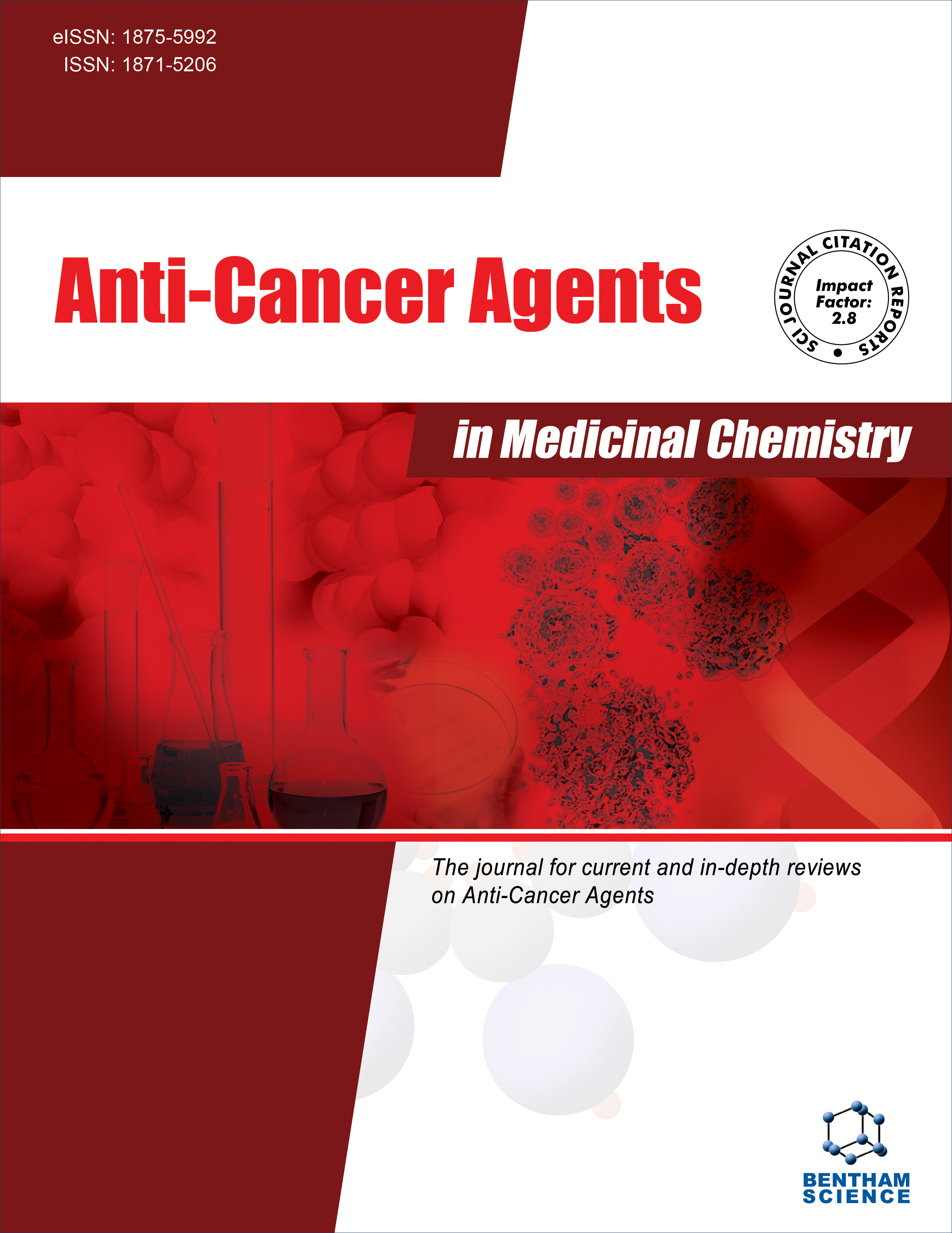- Home
- A-Z Publications
- Anti-Cancer Agents in Medicinal Chemistry (Formerly Current Medicinal Chemistry - Anti-Cancer Agents)
- Previous Issues
- Volume 10, Issue 5, 2010
Anti-Cancer Agents in Medicinal Chemistry (Formerly Current Medicinal Chemistry - Anti-Cancer Agents) - Volume 10, Issue 5, 2010
Volume 10, Issue 5, 2010
-
-
Editorial [Hot topic: Metal-Containing Drugs and Novel Coordination Complexes in Therapeutic Anticancer Applications - Part II (Guest Editor: Irena Kostova)]
More LessWhile cancer remains a major killer in the developed world, a broad spectrum of novel and exciting approaches are being developed and tested. The importance of metal compounds in medicine is undisputed, as can be judged by the use of many metal-based compounds in the treatment of various diseases. In terms of anti-tumour activity, a wide range of compounds of both transition metal and main group elements have b Read More
-
-
-
Enzyme Inhibition as a Key Target for the Development of Novel Metal-Based Anti-Cancer Therapeutics
More LessAuthors: Darren Griffith, James P. Parker and Celine J. MarmionHistorically, DNA has been the target for many metal-based anti-cancer drugs, but drawbacks of prevailing therapies have stimulated the search for new molecular targets which may present unique opportunities for therapeutic exploitation. Enzyme inhibition has recently been identified as an alternative and significant target. The pursuit of novel metallodrug candidates that selectively target enzymes is now the subject of inten Read More
-
-
-
Recent Researches in Metal Supramolecular Complexes as Anticancer Agents
More LessAuthors: Cheng-He Zhou, Yi-Yi Zhang, Cong-Yan Yan, Kun Wan, Lin-Ling Gan and Yuan ShiThe research and development of metal supramolecular complexes as anticancer supramolecular drugs, which are aggregates mainly formed by one or more inorganic metal compounds with one or more either inorganic or organic molecules in general via coordination bonds, has been a quite rapidly developing, increasingly active and newly rising highlight interdisciplinary field. Numerous efforts have been directed towar Read More
-
-
-
Fresh Platinum Complexes with Promising Antitumor Activity
More LessPlatinum-based anticancer chemotherapy constitutes a cornerstone for the treatment of various solid tumors. However, existing platinum drugs like cisplatin encounter many obstacles such as drug resistance and systemic toxicity in clinical applications. Extensive attempts have been made to minimize the side effects of platinum drugs. This review concentrates on the major development of novel platinum complexes in the last Read More
-
-
-
Progresses in TCM Metal-Based Antitumour Agents
More LessAuthors: Zhen-Feng Chen and Hong LiangTraditional Chinese medicines (TCM) have recently been recognized as a new source of anticancer drugs and new chemotherapy adjuvant to enhance the efficacy of chemotherapy and to diminish side effects and resistance of cancer chemotherapies. At the same time, cisplatin, one of the most widely used anticancer drugs, is effective in treating a variety of cancers, especially testicular cancer for which it has a greater Read More
-
-
-
Compounds from Wild Mushrooms with Antitumor Potential
More LessAuthors: Isabel C.F.R. Ferreira, Josiana A. Vaz, M. Helena Vasconcelos and Anabela MartinsFor thousands of years medicine and natural products have been closely linked through the use of traditional medicines and natural poisons. Mushrooms have an established history of use in traditional oriental medicine, where most medicinal mushroom preparations are regarded as a tonic, that is, they have beneficial health effects without known negative side-effects and can be moderately used on a regular basis wit Read More
-
Volumes & issues
-
Volume 25 (2025)
-
Volume 24 (2024)
-
Volume 23 (2023)
-
Volume 22 (2022)
-
Volume 21 (2021)
-
Volume 20 (2020)
-
Volume 19 (2019)
-
Volume 18 (2018)
-
Volume 17 (2017)
-
Volume 16 (2016)
-
Volume 15 (2015)
-
Volume 14 (2014)
-
Volume 13 (2013)
-
Volume 12 (2012)
-
Volume 11 (2011)
-
Volume 10 (2010)
-
Volume 9 (2009)
-
Volume 8 (2008)
-
Volume 7 (2007)
-
Volume 6 (2006)
Most Read This Month
Article
content/journals/acamc
Journal
10
5
false
en


